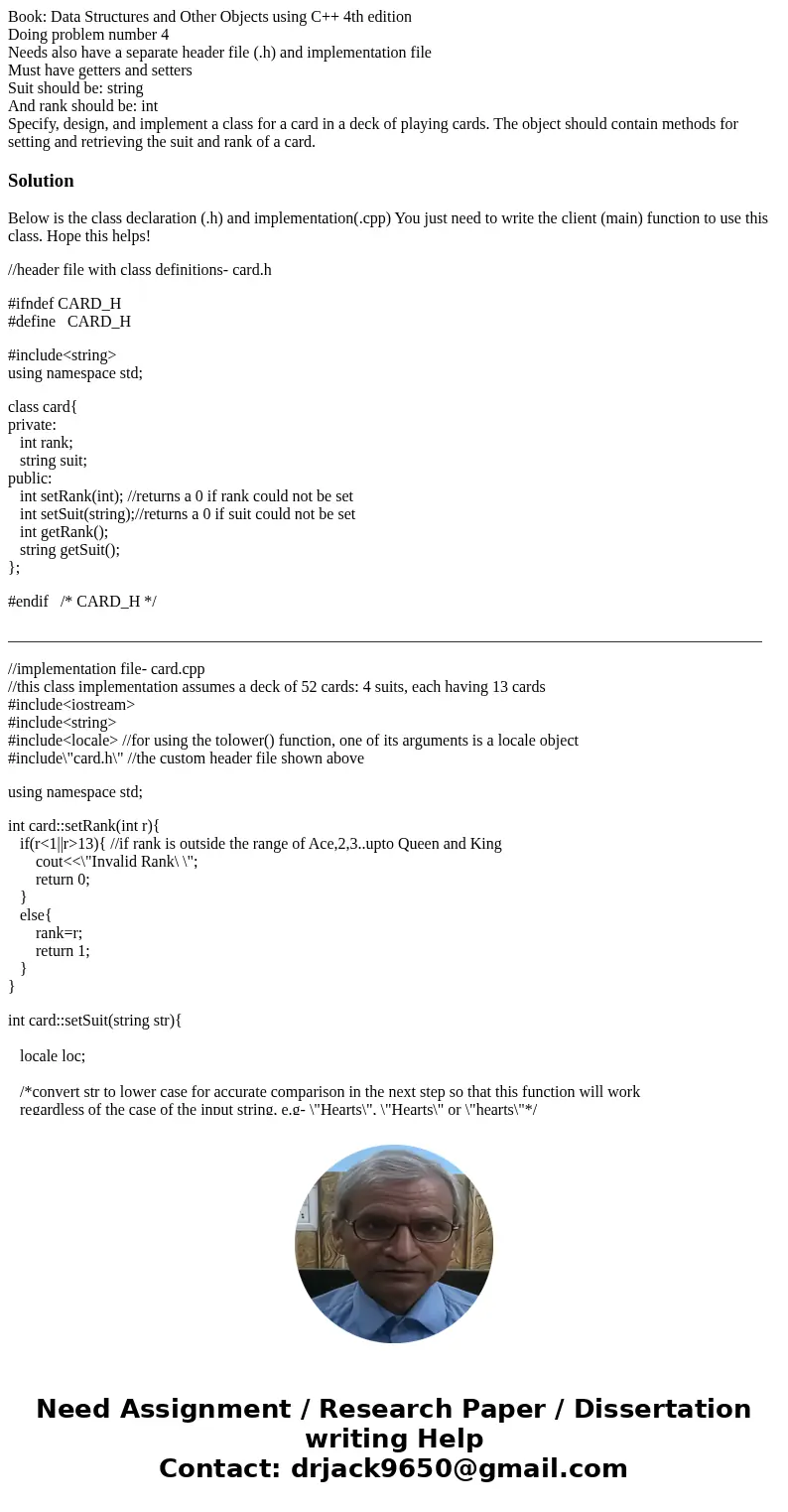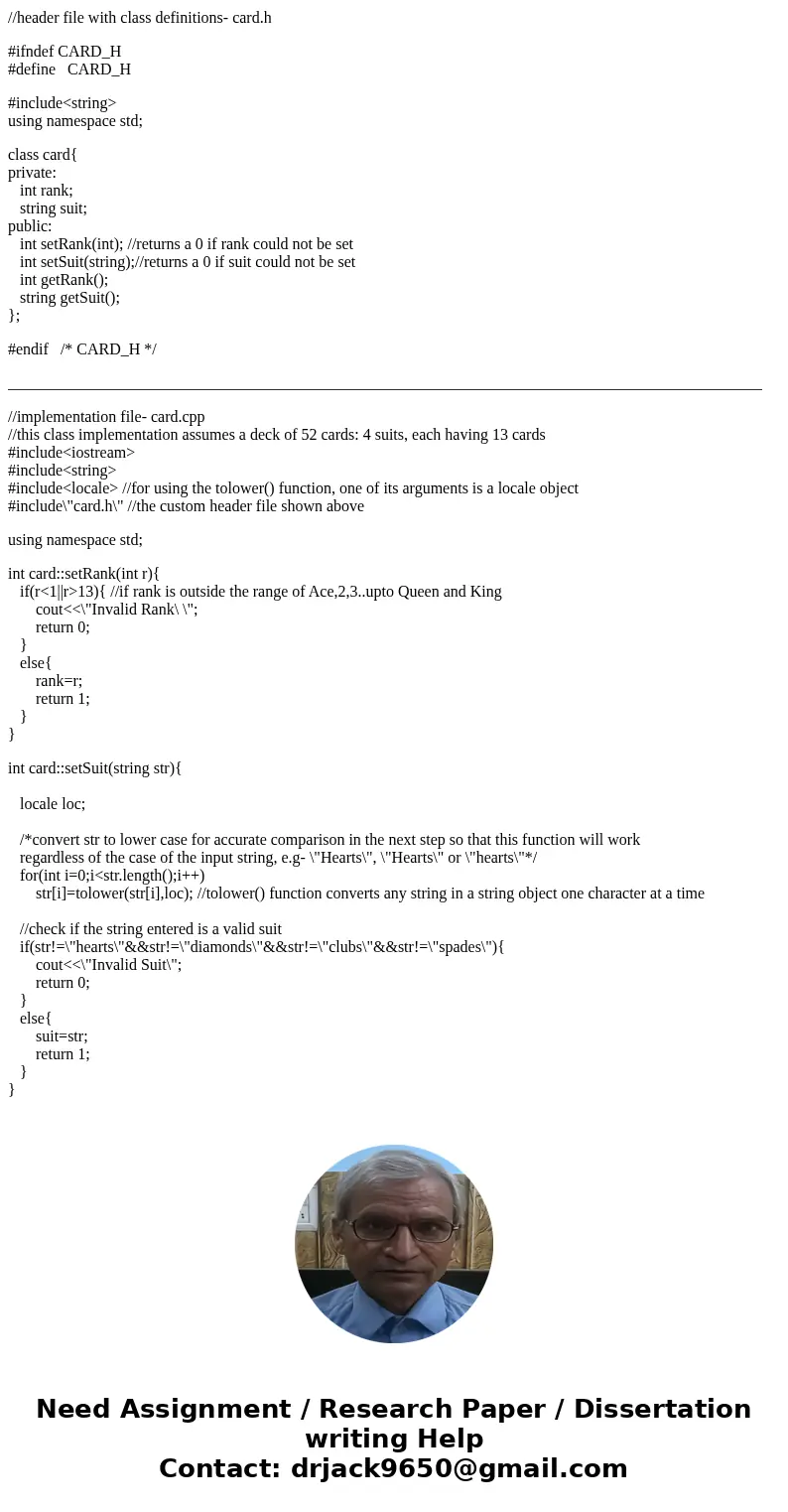Book Data Structures and Other Objects using C 4th edition D
Solution
Below is the class declaration (.h) and implementation(.cpp) You just need to write the client (main) function to use this class. Hope this helps!
//header file with class definitions- card.h
#ifndef CARD_H
#define CARD_H
#include<string>
using namespace std;
class card{
private:
int rank;
string suit;
public:
int setRank(int); //returns a 0 if rank could not be set
int setSuit(string);//returns a 0 if suit could not be set
int getRank();
string getSuit();
};
#endif /* CARD_H */
_______________________________________________________________________________________________
//implementation file- card.cpp
//this class implementation assumes a deck of 52 cards: 4 suits, each having 13 cards
#include<iostream>
#include<string>
#include<locale> //for using the tolower() function, one of its arguments is a locale object
#include\"card.h\" //the custom header file shown above
using namespace std;
int card::setRank(int r){
if(r<1||r>13){ //if rank is outside the range of Ace,2,3..upto Queen and King
cout<<\"Invalid Rank\ \";
return 0;
}
else{
rank=r;
return 1;
}
}
int card::setSuit(string str){
locale loc;
/*convert str to lower case for accurate comparison in the next step so that this function will work
regardless of the case of the input string, e.g- \"Hearts\", \"Hearts\" or \"hearts\"*/
for(int i=0;i<str.length();i++)
str[i]=tolower(str[i],loc); //tolower() function converts any string in a string object one character at a time
//check if the string entered is a valid suit
if(str!=\"hearts\"&&str!=\"diamonds\"&&str!=\"clubs\"&&str!=\"spades\"){
cout<<\"Invalid Suit\";
return 0;
}
else{
suit=str;
return 1;
}
}


 Homework Sourse
Homework Sourse